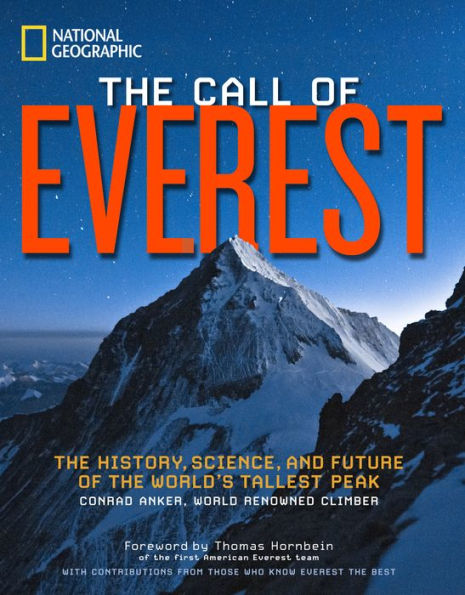Read an Excerpt
On May 26, 2012, I look down from the summit of Mount Everest to three glaciers that have sculpted the mountain. For the past nine and a half hours I have been climbing the Southeast Ridge in near-perfect weather. At an elevation of 8,850 meters, there is no higher place on our planet. The world literally drops away below. To the east, the robust Kangshung Glacier pushes moraine into Tibet and in the process creates small glacial lakes. To the north, the Rongbuk Glacier is solid in appearance, yet I know that it is moving, ever so slowly. To the south and west, the Khumbu Glacier, cascading down the southern flank of the Himalaya, provides sustenance to the people of Nepal and India. The frozen snow on which I stand may eventually join the Ganges, slowly making its way to the Bay of Bengal and the Indian Ocean. Perhaps this water will be recycled and deposited once again in the Himalaya to begin the timeless cycle of regeneration.
Standing on the apex of our planet is humbling. I’m starved of oxygen, depleted of reserves, unable to eat, and bound by anxiety. This is a dangerous place. Yet the symbolism of standing on top of the world gives me a chance to experience time on a cosmic scale. During the half hour I spend on the summit, I reflect on the mountain—how it came to be, its significance to humanity, and my personal connection to Everest. For the third time I have the opportunity to stand at this unique spot on the planet.
Humans frame time within the span of our own existence and, to a lesser extent, the history of humanity. We anthropomorphize time, as if what happens to humans is the only relevant measure. We are exhorted to live in the here and now. Yet on the upper reaches of the highest mountain, we live on borrowed time. Dillydally too long and we will die. When we face adverse situations, time is immediate. This immediacy provides a prism through which we can view our planet. How do we fit into the grand scheme of life? Everest, with its timeless immensity, highlights how insignificant human existence is. Standing on the summit, looking up through the troposphere to the blue, purple infinity of space, on a mountain of rock millions of years old, thrust up into the sky by a thin crust of earth floating on a moving mantle and carved away by gravity, I contemplate my place in the universe.
I feel insignificant. The mountains seem to have conquered us long before we set foot on them, and they will remain long after our brief existence. This indomitable force of the mountains gives us humans a blank canvas on which to paint the drive of discovery and, in the process, test the limits of human performance.




